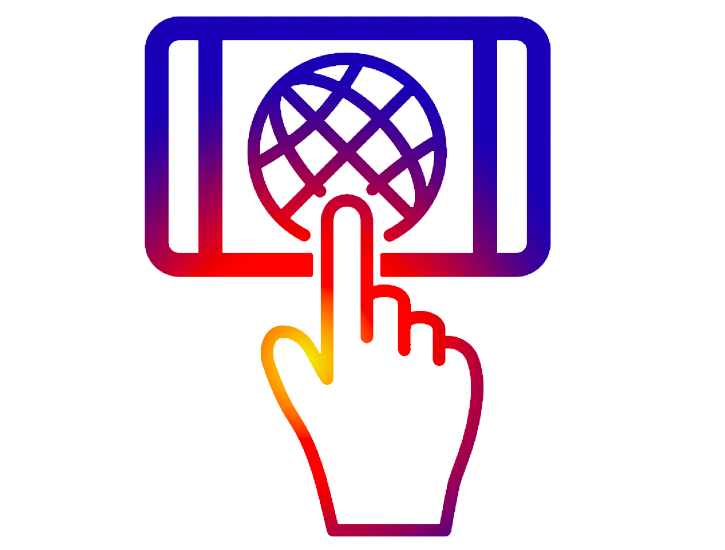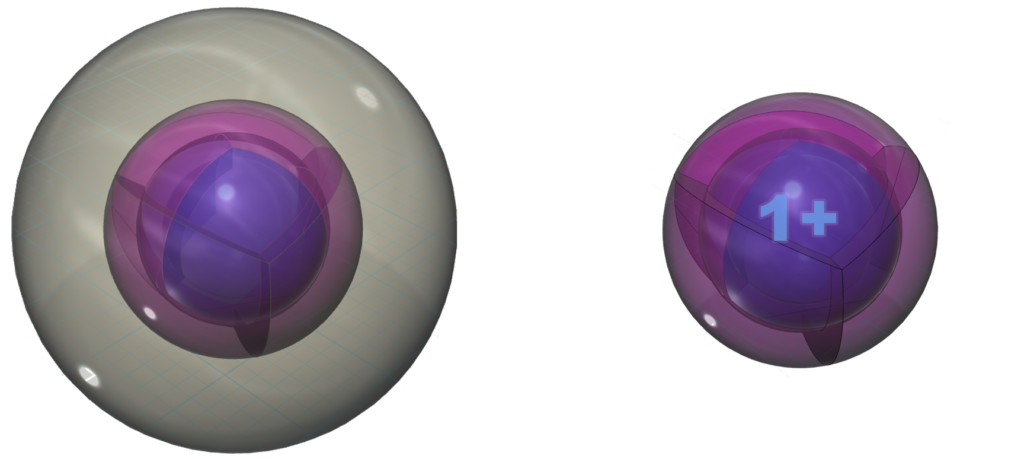
RETURN to Periodic Table
Potassium is the 19th element on the periodic table. It has 19 protons and 20 neutrons in the nucleus, giving it a mass of 39 amu, and it has 19 electrons enveloping the nucleus.
Electron Shell
Potassium has the same electron configuration as sodium, but with three full shells within that have the identical configuration to argon. Being one shell larger than sodium, potassium has a lower ionization energy and is therefore more reactive.

 CLICK HERE to interact with this object.
CLICK HERE to interact with this object.As we saw in the case of argon, the 3rd shell orbitals are more like spherical tetrahedra, and the 4th shell is a single electron in a spherical s-orbital. These orbitals represent phase-locked, resonant, coherent, harmonic, stationary waves.
Ion formation
With a lower ionization energy, potassium will give up its valence electron more eagerly than sodium in an ionic interaction, in order to reach the stability of the 3s23p6 noble gas configuration of argon, which is a multi-di-electron state with three concentric full shells. That is why potassium forms a 1+ ionic state so violently.

Pure potassium metal reacts explosively when placed in water as it donates its valence electron to oxygen. The heat of this reaction ignites the hydrogen gas that is also produced from the water. Potassium burns with a purple flame and throws purple sparks. It is used to create this same effect and color in fireworks. A fun video showing potassium metal and its reactivity can be found HERE.
RETURN to the Periodic Table
OTHER GROUP I ELEMENTS: Lithium, Sodium, Potassium, Rubidium, Cesium
